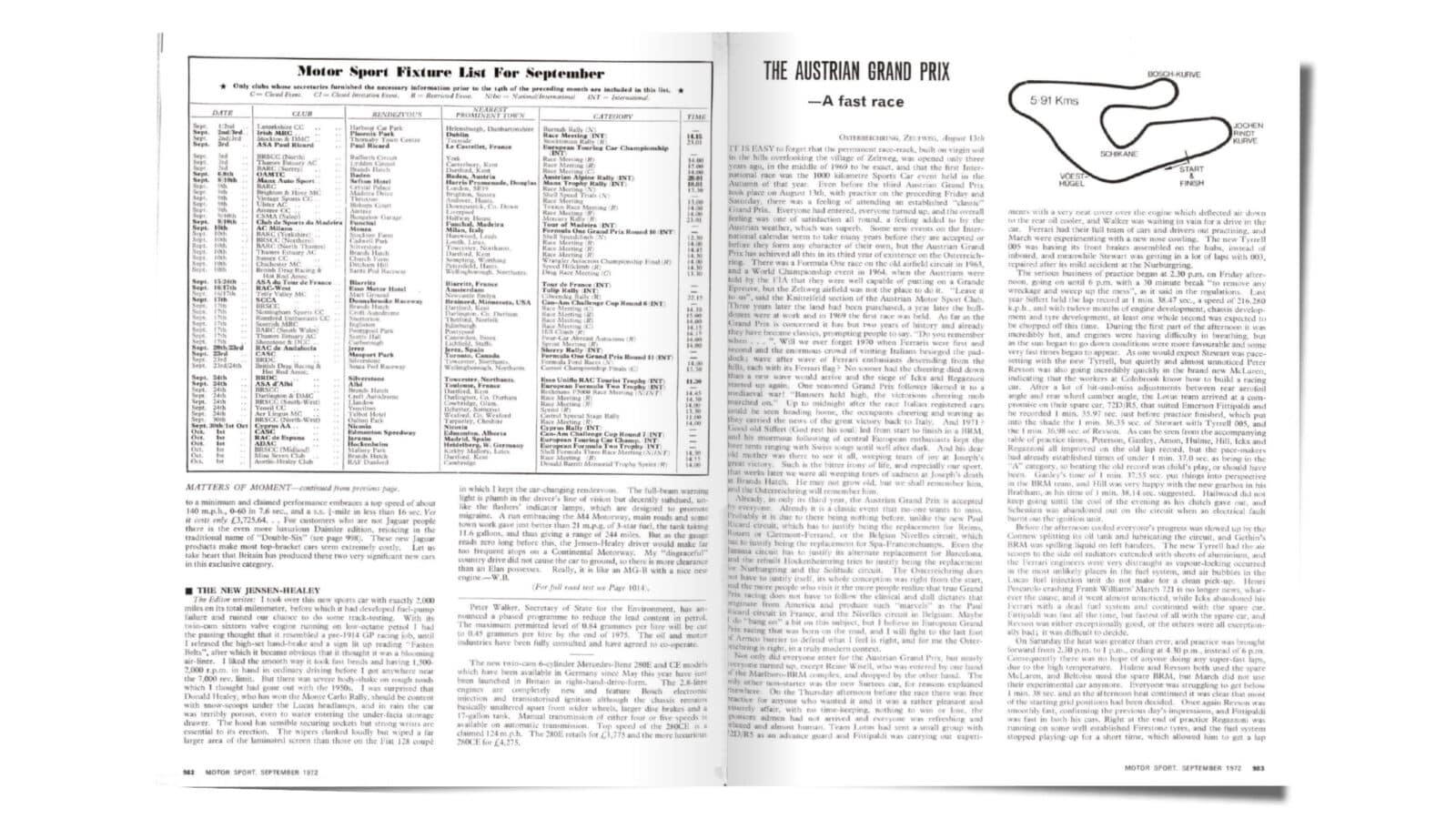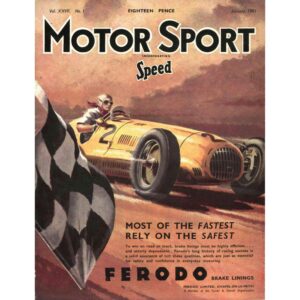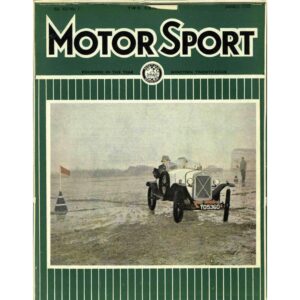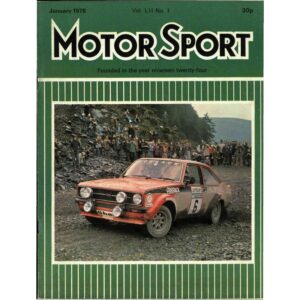‘Medieval war at the Osterreichring’; — from the archives
A Motor Sport rewind to the Austrian GP in 1972, courtesy of Jenks

Österreichring, austria, August 13, 1972
It is easy to forget that the permanent race-track, in the hills overlooking the village of Zeltweg, was opened only three years ago. Even before the third Austrian Grand Prix took place there was a feeling of attending an established Grand Prix. Some new events on the international calendar seem to take many years before they form any character of their own, but the Austrian Grand Prix has achieved all this in its third year on the Osterreichring.
Will we ever forget 1970 when Ferraris were first and second and the enormous crowd of visiting Italians besieged the paddock; wave after wave of Ferrari enthusiasts descending from the hills, each with its Ferrari flag? No sooner had the cheering died down than a new wave would arrive and the siege of Ickx and Regazzoni started up again. One seasoned Grand Prix follower likened it to a mediaeval war! “Banners held high, the victorious cheering mob marched on.” Up to midnight after the race Italian-registered cars could be seen heading home, the occupants cheering and waving as they carried the news of the great victory back to Italy.
And 1971? Good old Siffert (God rest his soul) led from start to finish in a BRM, and his enormous following of central European enthusiasts kept the beer tents ringing with Swiss songs until well after dark. And his dear old mother was there to see it all, weeping tears of joy at Joseph’s great victory.
For three days [ahead of 1972’s race] people had been pouring into the Zeltweg plain, many of them camping in the fields around the circuit, the beer tents, the hot-dog stalls and the fair-ground doing enormous trade from them, and by the time the Grand Prix cars came out into the pit road the crowd estimates varied from 100,000 to 150,000, and whichever you accept there were a lot of people about the place.
The grid was due to line up in offset pairs with Emerson Fittipaldi on pole. After a warm-up lap cars assembled on the “dummy grid” with mechanics protecting their cars and drivers from the heat of the sun with umbrellas, and at the signal from the time-keepers the 25 cars moved forward to the starting line, ready for 54 laps of the undulating and hot 5.911 kilometres of the Österreichring.—DSJ
To read the full race report visit our online archive. Get daily doses of period reports and interviews by signing up to our free Great Reads e-mail newsletter via our website.
On this month… Tony Pond, Betty Haig and Clark Gable

Italian jobs
January 1951
The year begins with a detailed look at Fiat racing engines 1922-27 and the trends of racing car design. We also head to the flicks to catch Clark Gable’s racing movie To Please a Lady. “The filming of the 1950 Indianapolis race is excellent,” editor Bill Boddy enthuses.

Big cat prowl
January 1965
A review of a 4.2-litre E-type takes editor Bod on the motorways: “rain was by now torrential – we were skirting Manchester, of course”. Elsewhere, we speak to racing driver Betty Haig. Her shopping car is an Alfa Giulia Spyder “with a very pleasant 5-speed gearbox”.

Scandi Crush
January 1976
“It is difficult to view things with a realistic sense of proportion,” Jenks opines after the death of Graham Hill in a plane crash. Meanwhile, Leyland rally recruit Tony Pond isn’t totally convinced by Scandis: “There’s been a tendency to go Finnish when there’s now no need.”
